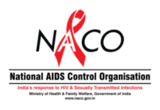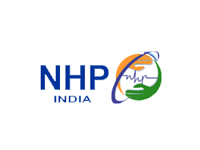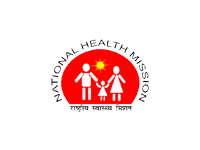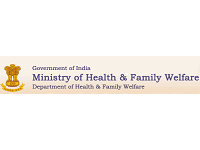V. Mohan Rao
HIV/AIDS is one of the fourteen major communicable diseases that affect the population in India, which had an estimated 5.21 million HIV infected people by the end of 2005 as against 5.13 million in 2004 and 5.10 million in 2003. The government has formulated the National AIDS prevention and control policy with the objectives and goals: to prevent the spread of HIV infection and reduce any adverse economic and social impact, to generate a feeling of ownership among all the participants at government and non-government levels to make it a national effort, to create an enabling socio-economic environment for prevention of HIV/AIDS. The policy also aims at providing care and support to people living with HIV/AIDS and to ensure protection/promotion of their human rights. Efforts are also being made at promoting better understanding of HIV infection among people, especially students, youth and other sexually active sections to generate greater awareness about the nature of its transmission and to adopt safe behavioural practices for prevention.
Mode of AIDS Transmission
The probable mode of transmission among the reported number of AIDS cases has been observed to be sexual mode of transmission, transmission from mother to child, blood and blood products and Injecting drug users. The adult prevalence of HIV infection in the country has been observed to be 0.9 per cent. However, the disease has a heterogeneous distribution with higher prevalence among high-risk population groups —commercial sex workers. The core strategy being implemented to prevent the spread includes Targeted Interventions (TI) among High Risk Groups (HRG) i.e., Commercial Sex Workers, Injecting Drug Users, Truckers, Migrant Labourers, Condom Promotion Treatment for Sexually Transmitted Infection, referrals for Counselling and Testing facilities, provision of safe blood, Anti Retro Viral Treatment, Treatment for Opportunistic Infections, Community Care Centres, Drop in Centres. Under the NACP phase-II, as many as 1040 NGOs are implementing 1088 Targeted Intervention among High Risk Groups and 107 NGOs are running 122 Community Care Centres (CCCs) across the country. The funding of NGOs for HIV/AIDS prevention and control has been decentralized to the respective State AIDS Control Societies and the States are given funds by National AIDS Control Organization (NACO) as per the approved action plan annually.
Mother-To-Child Transmission
Under prevention services, counseling and testing facilities at 3394 Centres with the provision of prophylaxis treatment for HIV infected pregnant women to prevent mother to child transmission, treatment of sexually transmitted infections at 974 hospitals and provision of free condoms to prevent new infections are being provided in all public facilities viz medical colleges, district hospitals, government health centers etc. This is besides free anti-retroviral treatment is being provided through 96 government hospitals. Free CD4 test to assess the immune status is provided to children below poverty line. Medical Colleges and district hospitals are provided one lakh rupees each for treatment of opportunistic infections in HIV infected persons. 122 Community Care Centres have been established for providing treatment against opportunistic infections. Financial assistance of Rs.65.36 crore and Rs.99.06 crore has been provided to states for care, support and treatment of AIDS patients during 2005-06 and 2006-07 respectively.
Strategy to Check Unsafe Sex
In order to check any scope of getting sexually transmitted infections on account of unsafe sex, NACO is promoting the A-B-C strategy – Abstinence, Be Faithful and Condom Use. Besides this, there is also a focus on Life Skill Education to keep youth away from drugs and unsafe behavioural practices. The condom use among high-risk population is promoted through Targeted Intervention Projects. The accessibility and availability of condoms, which is the only prophylaxis is being promoted through the social marketing approach. In its unprecedented efforts to combat the dreaded disease, the government has launched an ambitious programme Youth United for Victory on AIDS,(YUVA). The five-year programme is aimed at creating awareness among the people, particularly the young. The main feature of the programme is the involvement of Panchayati Raj Institutions, volunteers from youth organizations and NGOs. The target is to cover 50 per cent of young people by 2007, 65 per cent by 2008, 75 per cent by 2009 and 90 per cent by 2010.
Against Discrimination of HIV/AIDS Victims
The government proposes to bring HIV/AIDS Bill with the following objectives: to prohibit discrimination, ensure right to disclosure of information on HIV status, right to access for testing, treatment and counseling, right to safe working environment, promotion of strategies for reduction of risks, right to information and education on HIV/AIDS, formulation of appropriate social security scheme and appointment of Health Ombud. As many as 49,840 persons in the age group of 15-29 have been reported as AIDS cases since 1993, accounting for 31.1 per cent of total reported AIDS cases in the country as on October 2006. Based on the results of HIV prevalence in different population groups, six states (Tamil Nadu, Andhra Pradesh, Karnataka, Maharashtra, Manipur and Nagaland) have been declared as high prevalence states, where HIV prevalence among ante-natal mothers has been observed to be more than one per cent. The NACP has adopted a Rights based approach and thus no children of the affected families will be denied the right of education or employment.
Public Health Law
HIV/AIDS presents major challenges to human survival, human rights and human development with implications far beyond the health sector. The social and economic consequences of the epidemic are perhaps one of the most serious threats to sustainable human development and the UNDP therefore, promotes and advocates for HIV as a developmental issue. In India, the government is engaged in the preparation of a draft Public Health Emergencies Bill to replace the existing Epidemic Diseases Act. As this Act is very old and there have been considerable advances in the epidemiological concepts towards prevention and control of epidemic diseases. Moreover, newer diseases such as HIV/AIDS, Avian Influenza etc have emerged as major potential challenges to tackle the public health emergency situations in the country arising as result of disasters and bio-terrorism incidents besides dangerous epidemic diseases by instituting appropriate public health measures.
Major Achievements of NACP
As on October 2006, a total of 1162 Sentinel Sites for HIV Trends have been established and 255 major blood banks and 883 district blood banks modernized. The awareness among people is over 80 per cent. More than 93,000 schools have been covered under the HIV/AIDS awareness programme. (PIB Features)
Disclaimer: The views expressed by the author in this feature are entirely his own and not necessarily reflect the views of PIB.

























